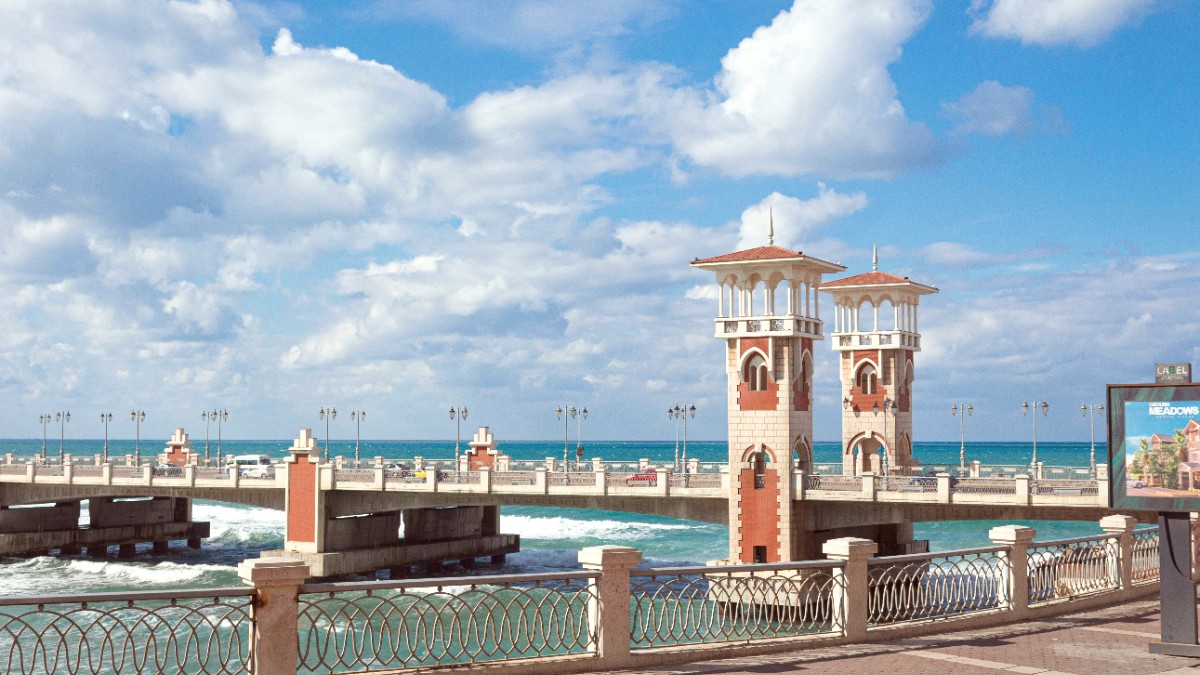
Mediterranean Coast, Egypt
Alexandria sits on the Mediterranean coast of Egypt, approximately 220 kilometers (137 miles) northwest of Cairo, Egypt's capital. The city stretches for about 32 kilometers (20 miles) along the coastline, curving gracefully around the Eastern and Western harbors.
Its fame in antiquity rested on two monumental achievements: the Lighthouse of Alexandria and the Great Library. The Lighthouse, or Pharos, was one of the Seven Wonders of the Ancient World, guiding ships into its busy harbor and symbolizing the city's power and ingenuity.
The Great Library of Alexandria was an unparalleled repository of knowledge, attracting scholars and thinkers from across the Hellenistic world, making Alexandria a symbol of learning and scientific advancement.
Alexander envisioned it as a hub that would connect his vast empire, a dream realized as Alexandria quickly rose to prominence. Under the Ptolemaic dynasty, established by one of Alexander’s generals, the city became the capital of Egypt and a leading intellectual and cultural center of the ancient world.
This period saw the flourishing of science, philosophy, and art. The Lighthouse, or Pharos, was one of the Seven Wonders of the Ancient World, guiding ships into its busy harbor and symbolizing the city's power and ingenuity.
Capital of Egypt, intellectual center.
Major port, Roman Empire's breadbasket.
Waned as Cairo rose.
Modern port, naval base.
Bustling international metropolis.
After the Ptolemies, the city continued to be a significant center under Roman and Byzantine rule, maintaining its status as a major port and a breadbasket for the Roman Empire. However, its importance began to wane after the Arab conquest in 641 AD, as Cairo became the new capital. For centuries, Alexandria remained a smaller, quieter port.
Alexandria today is Egypt's second-largest city and its most important port, handling a substantial portion of the country's foreign trade. Beyond its port activities, the city functions as a major industrial and commercial hub, contributing significantly to Egypt's economy.
For travelers, Alexandria presents a compelling contrast to the country's more widely known Pharaonic sites. The city's cityscape features a distinctive European-influenced architecture, specifically evident in its downtown areas and along the Corniche.
Today, the city reflects this layered past, with Roman ruins adjacent to modern buildings, and European-style boulevards leading to bustling Egyptian markets. Its history is not just about ancient wonders, but about a continuous evolution as a city at the crossroads of continents and cultures.
Alexandria today is Egypt's second-largest city and its most important port, handling a substantial portion of the country's foreign trade.
For travelers, Alexandria presents a compelling contrast to the country's more widely known Pharaonic sites. The city's cityscape features a distinctive European-influenced architecture, specifically evident in its downtown areas and along the Corniche.
It houses the modern Bibliotheca Alexandrina, a grand tribute to its ancient predecessor, which functions as a major cultural institution with museums, art galleries, and performance spaces.
The city hosts numerous historical sites, including the Citadel of Qaitbay, the Catacombs of Kom El Shoqafa, and Pompey's Pillar, each offering glimpses into its layered past.
Enjoying fresh seafood, walking along a scenic promenade, and soaking in the atmosphere of a truly diverse urban environment.
The city moves at its own pace, a blend of historical depth and contemporary daily life, inviting visitors to discover its many facets.